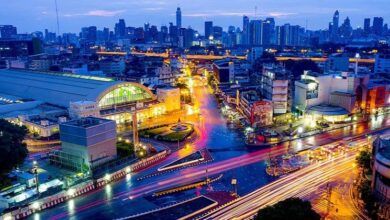Polyvinyl chloride, commonly referred to as PVC, is a synthetic polymer that has become an integral part of modern life. From construction materials and household items to medical devices and packaging, PVC is ubiquitous due to its versatility, durability, and cost-effectiveness. However, concerns about the safety and environmental impact of PVC have led to debates and misconceptions surrounding its use. In this article, we will delve into the truth about is pvc safe, assess its safety, and explore the associated risks.
Understanding PVC
Polyvinyl chloride (PVC) is a thermoplastic polymer derived from vinyl chloride monomers through polymerization. It can be produced in both rigid and flexible forms, making it suitable for a wide range of applications across various industries. PVC is valued for its chemical resistance, durability, and low cost, making it a preferred material for products such as pipes, window frames, flooring, clothing, and medical equipment.
The Safety of PVC: Debunking Myths and Misconceptions
Despite its widespread use, PVC has faced scrutiny and criticism regarding its safety. Let’s examine some common myths and misconceptions surrounding PVC and separate fact from fiction:
PVC Releases Harmful Chemicals into the Environment
Fact: While PVC production and incineration can release certain chemicals, including dioxins and volatile organic compounds (VOCs), modern manufacturing processes have significantly reduced emissions. Regulatory agencies enforce strict guidelines to minimize environmental impact, and PVC products manufactured within these standards pose minimal risk to human health and the environment.
PVC Contains Toxic Additives Such as Phthalates
Fact: PVC products may contain additives such as plasticizers to enhance flexibility and stability. While some plasticizers, such as certain phthalates, have raised concerns about potential health risks, regulatory agencies impose strict limits on their use in consumer products. Moreover, manufacturers have developed alternative plasticizers and formulations to address safety concerns.
PVC Poses Health Risks to Consumers
Fact: Extensive scientific research and regulatory assessments have concluded that PVC products are safe for everyday use when manufactured and used according to established guidelines. Regulatory agencies, including the U.S. Food and Drug Administration (FDA) and the European Chemicals Agency (ECHA), conduct thorough toxicological evaluations to ensure product safety.
PVC Recycling is Not Feasible and Environmentally Friendly
Fact: While PVC recycling presents challenges due to its complex composition and contamination with additives, advancements in recycling technologies are improving its feasibility. Additionally, incineration for energy recovery is a viable option for end-of-life PVC products, contributing to resource conservation and waste reduction.
Evaluating PVC Safety: Regulatory Oversight and Compliance
To ensure the safety of PVC products, regulatory agencies worldwide establish strict guidelines and standards governing their production, use, and disposal. These regulations cover various aspects, including chemical composition, manufacturing processes, and environmental impact. Some key regulatory bodies overseeing PVC safety include:
- United States Environmental Protection Agency (EPA): The EPA regulates the production and use of PVC in the United States, setting limits on chemical emissions and enforcing compliance with environmental standards.
- European Chemicals Agency (ECHA): The ECHA oversees the regulation of chemicals and substances, including PVC additives, within the European Union. It conducts risk assessments and imposes restrictions to protect human health and the environment.
- Consumer Product Safety Commission (CPSC): The CPSC sets safety standards for consumer products, including PVC-based items like toys, packaging, and household goods. It enforces regulations to ensure that PVC products meet safety requirements and do not pose risks to consumers.
Environmental Considerations: PVC and Sustainability
In addition to concerns about human health, there is growing awareness of the environmental impact of PVC production and disposal. While PVC offers many benefits, such as durability and recyclability, its lifecycle poses challenges in terms of energy consumption, greenhouse gas emissions, and waste generation. However, efforts are underway to address these challenges and promote the sustainable use of PVC:
- Circular Economy Initiatives: Circular economy principles, such as recycling and resource recovery, are being embraced to minimize waste and maximize the value of PVC products throughout their lifecycle. Innovations in recycling technologies and infrastructure are making it easier to recover and reuse PVC materials.
- Alternative Materials and Innovations: Research and development efforts are focused on finding alternative materials and manufacturing processes that reduce the environmental footprint of PVC. Bio-based polymers, renewable energy sources, and eco-friendly additives are being explored to make PVC production more sustainable.
- Life Cycle Assessments (LCAs): LCAs are used to evaluate the environmental impact of PVC products from cradle to grave. By analyzing factors such as raw material extraction, production, use, and disposal, LCAs provide insights into areas where improvements can be made to enhance sustainability.
Consumer Awareness and Empowerment
As consumers, understanding the safety and environmental impact of the products we use is essential for making informed choices. By staying informed about is pvc safe regulations, recycling options, and sustainable practices, we can contribute to a safer and more sustainable future. Here are some steps consumers can take to promote PVC safety and sustainability:
- Read Product Labels: Look for information on PVC content, safety certifications, and recycling instructions on product labels and packaging.
- Support Responsible Brands: Choose products from companies that prioritize safety, environmental stewardship, and transparency in their manufacturing processes.
- Advocate for Change: Raise awareness about PVC safety and sustainability issues in your community and support initiatives that promote safer, more sustainable alternatives.
Conclusion
Polyvinyl chloride (PVC) is a versatile and valuable material that has revolutionized various industries. While concerns about PVC safety and environmental impact exist, regulatory oversight, technological advancements, and consumer awareness are driving positive change. By understanding the facts, dispelling myths, and advocating for responsible practices, we can harness the benefits of PVC while minimizing its potential risks. With a commitment to safety, sustainability, and innovation, PVC can continue to be a valuable resource for meeting the needs of society while preserving our planet for future generations.





